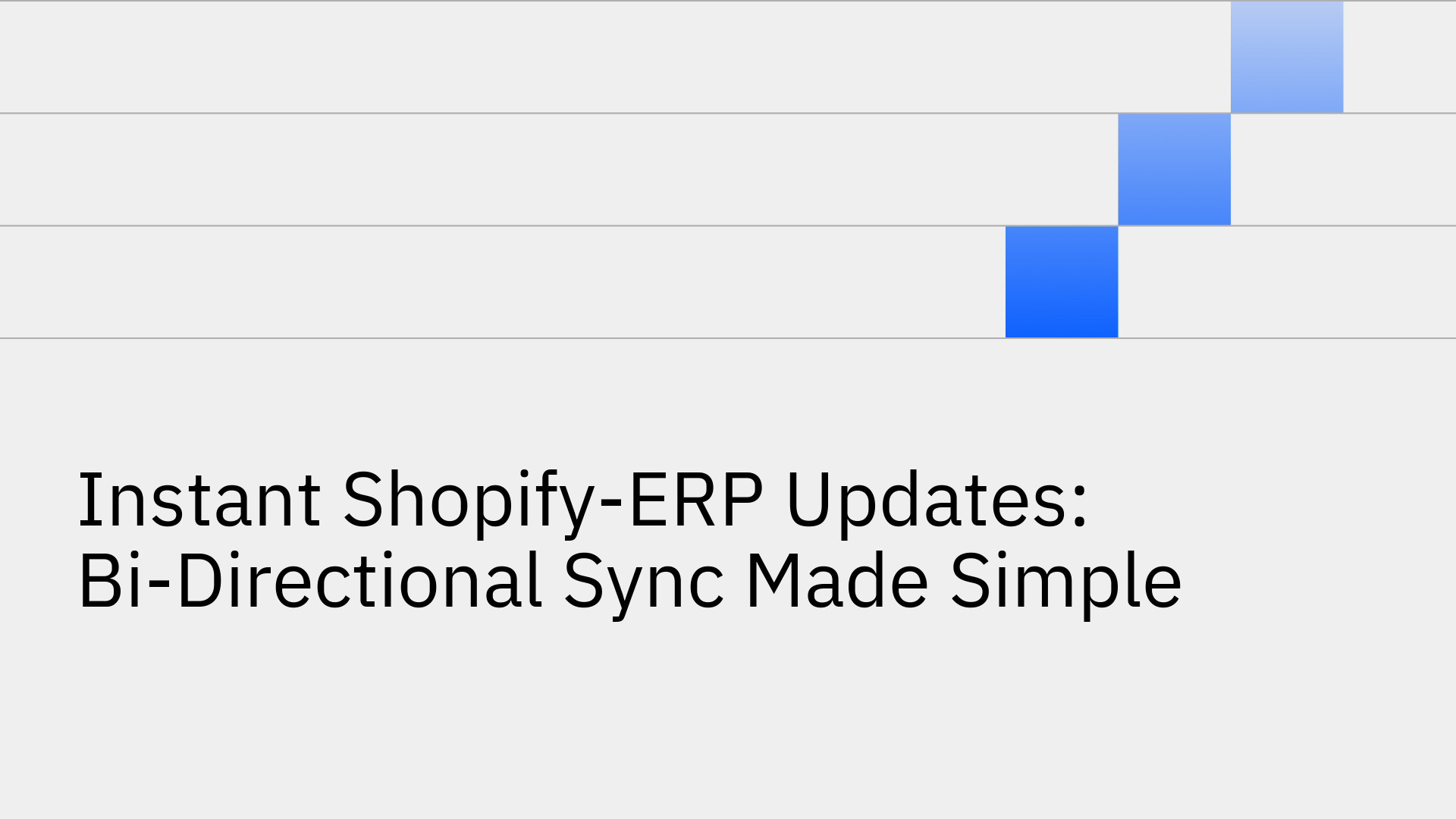
E-commerce businesses often struggle to keep their Shopify store and Enterprise Resource Planning (ERP) system synchronized. This disconnect creates data silos, leading to manual entry errors and delays that cause operational chaos [4].
With the global ERP software market projected to reach $96 billion by 2032, the reliance on effective integration is only growing [2]. The solution is bi-directional, real-time synchronization, which unifies data and streamlines operations. This article explains how instant, two-way updates between Shopify and an ERP can be simplified to drive efficiency and growth.
Traditional integration methods, like manual data entry or one-way, batch-based syncing, are fraught with limitations. While these approaches might seem simpler or less costly upfront, they introduce significant operational risks and hidden costs that hinder a business's ability to scale.
Bi-directional sync, also known as two-way sync, is a continuous, real-time process where data flows back and forth between two systems. When a change is made in one system (e.g., a customer updates their address in Shopify), it is automatically and instantly updated in the other (e.g., your ERP), and vice versa [6].
This stands in stark contrast to one-way sync, where data only moves in a single direction, often on a delayed schedule. For e-commerce, shopify to erp real time updates are critical for maintaining a single source of truth across the business. This ensures that every department, from sales and marketing to finance and fulfillment, is working with the most current and accurate information. Achieving bi-directional NetSuite Shopify data consistency is not just a technical goal but a business necessity.
Real-time sync ensures that your inventory levels are always accurate across both Shopify and your ERP. When a product is sold on your Shopify store, the stock count is immediately reduced in the ERP. Likewise, when new stock arrives and is logged in the ERP, the available quantity is instantly updated on your Shopify storefront. This simple but powerful automation prevents overselling and stockouts, helping you maximize sales opportunities and maintain customer trust.
With bi-directional sync, new orders from Shopify are instantly and automatically created in the ERP, eliminating the need for manual data entry. This action can trigger the entire fulfillment process, from alerting warehouse operations to generating shipping labels. Once the order is shipped, tracking information entered in the ERP is automatically synced back to Shopify. This triggers customer notifications, providing a seamless post-purchase experience and reducing "Where is my order?" inquiries [8].
Consistency is key for product, customer, and pricing information. Bi-directional sync ensures that any updates to product descriptions, images, or prices in your ERP are reflected on your Shopify store automatically. Similarly, new customer accounts created in Shopify can be synced to the ERP, creating a unified and accurate customer view across your entire business. Platforms like Stacksync provide a reliable two-way NetSuite Shopify integration that guarantees this level of data integrity.
Stacksync is a platform built from the ground up for real-time, bi-directional synchronization. It is designed to connect Shopify to a wide range of ERPs (like NetSuite and SAP) and over 200 other business systems. With Stacksync, a robust Shopify two-way sync integration can be configured in minutes, not months, without writing complex code.
Our platform makes it simple and powerful with key features:
With pre-built connectors, you can establish powerful integrations, such as a real-time NetSuite Shopify integration, to unify your operations.
The transformative impact of shopify to erp real time updates cannot be overstated. Moving away from manual or delayed processes to an automated, bi-directional sync is essential for any brand looking to scale its operations. This shift improves efficiency, enhances the customer experience, and provides the reliable data foundation needed for smart business decisions. For any scaling e-commerce business, it's no longer a luxury but a necessity.
Ready to eliminate data silos and automate your e-commerce operations? See how Stacksync can solve your Shopify-ERP integration challenges.